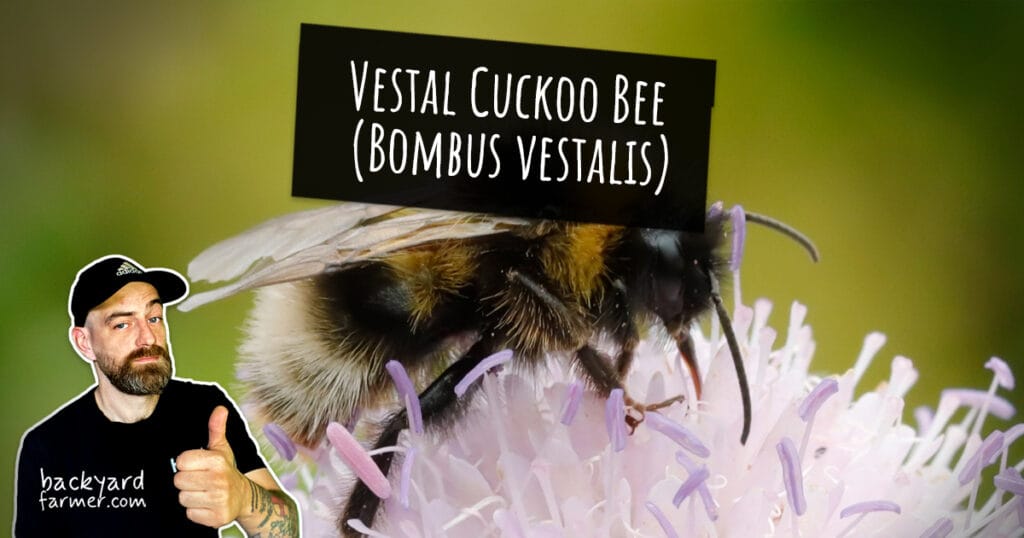Table of contents
- Introduction
- What Are Worm Castings?
- Benefits of Using Worm Castings in the Garden
- How to Use Worm Castings (Practical Applications)
- Worm Casting Tea – The Natural Plant Booster
- FAQ – Common Worm Casting Questions Answered
- Where to Buy Worm Castings in the UK
- Make Your Own: Intro to Vermicomposting at Home
- Final Thoughts: Why Worm Castings Are Worth It
Introduction
Worm castings might not look like much, but don’t be fooled—they’re one of nature’s most powerful organic fertilizers. Also known as vermicast or worm compost, these nutrient-rich droppings are produced by earthworms as they break down compost and organic matter. Packed with essential nutrients, beneficial microbes, and natural compounds, worm castings are a fantastic way to boost soil health, improve drainage, and support thriving plant growth.
Whether you’re growing vegetables, feeding houseplants, or looking for a lawn care alternative to synthetic fertilizers, worm castings offer a gentle, chemical-free way to give your plants exactly what they need.
In this guide, we’ll break down:
- What worm castings actually are
- Why they’re so good for your garden
- How to use worm castings effectively across different growing spaces
- Where to buy worm castings in the UK
- How to make your own with a simple DIY vermicomposting setup
💡 Looking to get started? Check out our list of UK garden centres near you for local stockists.
Let’s dig in.
What Are Worm Castings?
Worm castings are nature’s version of supercharged compost—nutrient-rich, microbe-packed worm manure that gardeners swear by. As earthworms work through compost, decaying leaves, and other organic waste, their digestive systems break everything down into castings. The result? A fine, crumbly material that’s loaded with slow-release nutrients and beneficial microbes your plants can actually use.
Also known as vermicast or vermicompost, worm castings resemble dark, fertile soil and have that classic earthy smell. They’re naturally rich in nitrogen, phosphorus, potassium (NPK), calcium, magnesium, and trace minerals—all in a form that’s immediately available to plants.
Not sure how worm castings compare to compost? Find out which is best for your garden in our side-by-side breakdown.
Key Benefits at a Glance:
- Nutrient-dense and bioavailable
- Safe for all plants – no risk of burning
- Packed with beneficial microbes
Unlike synthetic fertilizers, worm castings release nutrients gradually, meaning there’s no risk of overfeeding. They provide long-term nourishment that improves both soil and plant health.
But the benefits go beyond nutrients. Worm castings also contain humic acids, enzymes, and living microorganisms that:
- Improve soil structure
- Enhance nutrient uptake
- Support a thriving soil food web
Simply put, they don’t just feed your plants—they help restore and regenerate your entire growing environment.
Worm Castings vs. Compost
It’s also worth noting that worm castings are different from standard compost. While compost is broken down by bacteria and fungi, vermicompost comes from the digestive action of worms—making it more concentrated and biologically active.
Benefits of Using Worm Castings in the Garden
Worm castings are one of those rare garden fixes that work for just about everything—vegetable beds, containers, houseplants, lawns, and even raised beds. Whether you’re brand new to gardening or already deep into your compost game, they’re a simple and powerful way to feed your soil and help your plants thrive. Here’s why more and more gardeners are switching to this all-natural soil amendment:
1. Nutrient-Rich and Ready to Use
Worm castings are loaded with nitrogen, phosphorus, potassium (NPK), calcium, magnesium, and essential trace minerals. Even better, these nutrients are already in a plant-available form—no waiting, no risk of nutrient burn. It’s a complete organic fertilizer that works from day one.
2. Full of Beneficial Microbes
These tiny powerhouses are teeming with beneficial bacteria, fungi, and enzymes. Together, they improve soil biology, help break down organic matter, and protect your plants from disease. Essentially, worm castings breathe life into tired or depleted soil.
3. Improves Soil Structure and Water Management
Worm castings help loosen up heavy clay soils and add structure to sandy ones. Their crumbly texture boosts both drainage and water retention, which means your plants’ roots get more of what they need—air, water, and room to grow.
4. Gentle, Long-Lasting Fertilizer
Unlike synthetic fertilizers that deliver a quick hit and then fade, worm castings release nutrients slowly over time. They’re pH neutral and gentle enough to use on everything—from delicate seedlings to mature plants—without the worry of overfeeding.
5. Boosts Plant Health and Productivity
Healthier roots equal happier plants. With regular use of worm castings, you’ll often see more blooms, larger harvests, and better resistance to pests, disease, and environmental stress. They’re like a quiet upgrade to your entire growing setup.
6. Safe for Every Type of Plant
From microgreens and herbs to shrubs, trees, and indoor plants, worm castings are as safe as it gets. No measuring, no complex mixing—just apply directly or blend into your compost or potting mix.
🌿 Bonus: They mix beautifully with homemade compost and are a great way to stretch your organic matter further without sacrificing quality.
How to Use Worm Castings (Practical Applications)
Using worm castings is one of the easiest and most effective ways to improve plant growth and overall soil health. Whether you’re growing vegetables, flowers, houseplants, or maintaining your lawn, worm castings fit naturally into your routine with minimal effort.
Common Ways to Apply Worm Castings:
1. Top Dressing Soil
Sprinkle a generous handful of worm castings around the base of each plant or spread evenly across your garden beds. Water lightly to help the nutrients soak in. This method is ideal for raised beds, pots, borders, and lawn care.
2. Mixing Into Potting Mix
For a balanced growing medium, mix 10–20% worm castings into your potting soil. Perfect for seedlings, container gardens, or transplanting, as it boosts nutrient content and enhances microbial activity right where roots need it.
3. Seed Starting Made Easy
Add worm castings to your seed-starting mix for gentle, non-burning nutrition. They help promote strong root development and reduce transplant shock in young plants.
4. Compost Supercharger
Toss a few handfuls into your compost pile to speed up decomposition and increase the microbial diversity of your finished compost. It’s a great way to elevate the quality of your homemade compost.
5. Greener Lawns, Naturally
Apply a thin layer of worm castings across your lawn using a broadcast spreader or by hand. Best done before rainfall or scheduled watering, this natural fertilizer strengthens grass, improves soil structure, and supports beneficial soil organisms.
6. Brew Some Worm Tea
Create worm casting tea by steeping castings in non-chlorinated water with molasses and aeration. This liquid fertilizer is rich in microbes and nutrients and works well as a foliar spray or root drench.
FAQ Quick Answers
- Can you use too much worm castings? – Not really. They’re mild, but more isn’t always better.
- How often should I apply them? – Every 4–6 weeks during the growing season is ideal.
- Do you need to dilute worm castings? – Only if you’re making worm tea. Otherwise, use them directly.
- Can I use them dry? – Definitely. Dry castings work well—just water them in after applying.
💡 Pro Tip: Keep leftover worm castings in a breathable, cool, and dark container to preserve their microbial life.
Worm Casting Tea – The Natural Plant Booster
Worm casting tea is an easy, DIY liquid fertilizer made from worm castings—and it packs a serious punch. By steeping worm castings in aerated water, you create a microbe-rich tonic full of nutrients that plants can absorb quickly. Whether your garden needs a quick boost during a growth spurt or your seedlings need a gentle helping hand, worm tea is one of the most effective and natural ways to feed your plants.
Why Use Worm Casting Tea?
- Delivers fast-acting nutrients for vegetables, herbs, flowers, and houseplants
- Enriches the soil food web and supports microbial diversity
- Doubles as a foliar spray to feed leaves and ward off diseases
- Reduces transplant shock, especially in young or sensitive plants
Worm tea is especially useful during active growing periods or when plants show signs of stress. It works well alongside regular applications of dry worm castings or compost.
How to Make Worm Casting Tea
What You’ll Need:
- 1 cup of high-quality worm castings (100% pure vermicast)
- 5 litres of non-chlorinated water (rainwater is perfect)
- 1 tablespoon of unsulphured molasses (to feed the microbes)
- A clean bucket and an aquarium air pump for aeration
Steps:
- Place the worm castings into a mesh bag, old sock, or piece of cheesecloth.
- Submerge the bag into your bucket of water.
- Add the molasses and stir gently.
- Use the air pump to aerate the brew—oxygen helps microbes thrive.
- Let the mix bubble for 24–48 hours in a shaded spot.
- Use it fresh! Microbes start to lose potency if left too long.
How to Use Worm Tea
- Root drench: Pour directly into soil at the base of your plants.
- Foliar spray: Strain well and apply to leaves using a spray bottle for quick uptake and natural protection.
💡 Tip: Only brew as much worm casting tea as you’ll use in 1–2 days. Because it’s biologically active, it won’t store well over time.
FAQ – Common Worm Casting Questions Answered
Worm castings are one of those garden staples that seem simple at first glance—but once you start using them, a few questions tend to pop up. Whether you’re applying them to your lawn, houseplants, or vegetable beds, these frequently asked questions will help you get the most out of this incredible organic fertilizer.
Are worm castings a complete fertilizer?
Pretty much, yes. Worm castings contain a broad spectrum of nutrients and loads of beneficial microbes. While the NPK ratio isn’t sky-high like in synthetic fertilizers, what’s there is in a slow-release, plant-ready form. Plus, they do more than feed—they rebuild soil structure and boost long-term fertility.
Can I use too much worm castings?
Not really. Worm castings won’t burn your plants, even in generous amounts. But overdoing it won’t necessarily deliver more benefits—better to use them consistently and spread them where they’re most needed.
Do I need to dilute worm castings?
Nope, not for regular soil use. Just apply them directly to the soil. The only time you’ll dilute is when making worm tea, which involves steeping the castings in water to create a liquid fertilizer.
Can I use dry worm castings?
Yes! Dry worm castings are perfectly fine—just sprinkle them on your soil or around plants and water them in. The moisture activates microbial life and helps move nutrients into the root zone.
How long do worm castings last?
Up to 12 months. Stored correctly—in a breathable, cool, and dark container—worm castings stay effective for up to a year. They won’t go bad quickly, but for the best results, fresher is better.
Will worms hatch from worm castings?
It’s rare but possible. Most store-bought worm castings are screened and cured, so you’re unlikely to get live worms. However, if you’re using homemade castings and didn’t remove worm cocoons, you might see a few baby wigglers emerge.
Can worms live in worm castings?
Only temporarily. Without a steady supply of fresh food like compost or kitchen scraps, worms won’t thrive in castings alone. If the environment is moist and oxygenated, they’ll hang around briefly.
Do I need to mix worm castings with soil?
You can, but it’s not required. Mixing castings into potting mixes is ideal for seed trays or container gardening, while top dressing with worm castings works great for in-ground beds, borders, and houseplants.
🌱 Bonus Tip: When transplanting seedlings or garden plants, add a handful of castings into the hole. It helps reduce transplant shock and encourages root development from day one.
Where to Buy Worm Castings in the UK
Whether you’re new to gardening or a seasoned grower, finding quality worm castings in the UK can seriously level up your soil health and plant growth. This all-natural, microbe-rich organic fertilizer is becoming more popular—and thankfully, it’s easier than ever to get your hands on.
Here are the best ways to buy worm castings in the UK, including online stores, local retailers, and even DIY options:
1. Local Garden Centres and Nurseries
Many independent garden centres and nurseries now carry worm castings and vermicompost alongside compost, soil improvers, and organic fertilizers. Buying locally allows you to inspect the quality in person and support small UK businesses at the same time.
🛒 Tip: Use our Garden Centres Near Me tool to locate nearby stockists that may carry worm castings or related soil boosters.
2. Online Retailers
Shopping online is convenient—and there’s a growing number of UK-based sellers offering delivery of 100% pure worm castings:
- Amazon UK – Wide range of brands, including bulk worm castings
- GrowTropicals – Focused on living soils and organic nutrients
- eBay UK – Ideal for small to medium quantities from trusted sellers
When buying online, look for listings that specify “100% worm castings” or “pure vermicast.” Avoid products blended with compost unless you’re specifically looking for a mix.
3. Farmers’ Markets and Local Producers
Eco-conscious growers and small worm farms often sell worm castings directly at farmers’ markets or through community networks. These are usually fresher, more affordable, and produced with transparency.
4. Make Your Own at Home
Want a long-term, zero-waste option? Set up a simple worm bin and create your own vermicast using kitchen scraps and composting worms. It’s cost-effective, environmentally friendly, and puts you in control of what goes into your soil.
🧾 Quick Buyer’s Checklist
- ✅ Choose 100% pure worm castings—no fillers or additives
- ✅ Bags should feel moist and smell earthy (avoid dry, dusty ones)
- ✅ Look for UK-based suppliers to reduce emissions and shipping costs
- ✅ Bulk buying offers better value if you’re using castings regularly
Make Your Own: Intro to Vermicomposting at Home
If you’re into DIY and sustainable living, vermicomposting is a brilliant way to turn kitchen scraps into nutrient-rich worm castings—right from your own home. With just a few simple tools and a little routine care, you can set up a home worm farm and enjoy a steady, cost-free supply of organic fertilizer for your garden or indoor plants.
What Is Vermicomposting?
Vermicomposting is the process of using composting worms to break down organic waste—like food scraps and paper—into worm castings (also called vermicast). It’s an efficient, low-maintenance, and surprisingly clean method of composting that works well in small spaces, including patios, sheds, garages, or even under your kitchen sink.
What You Need to Get Started
- 🪱 A worm bin (use a plastic tub, stackable trays, or build your own wooden container)
- 📦 Bedding materials like shredded paper, cardboard, or coconut coir
- 🌱 A handful of garden soil to introduce helpful microbes
- 🐛 Red wiggler worms (Eisenia fetida)—the ideal composting worm species
- 🍌 Kitchen scraps such as vegetable peelings, coffee grounds, and crushed eggshells
Basic Steps to Set Up Your Worm Bin
- Line the bottom of your worm bin with moist bedding and a small amount of soil.
- Add your composting worms and allow them to settle into their new home.
- Bury food scraps in different areas of the bin each week.
- Maintain moisture levels—damp like a wrung-out sponge—and avoid feeding citrus, onions, or meat.
- Store your worm bin somewhere dark, cool, and sheltered from direct sun or extreme cold.
How to Harvest Worm Castings
After about 2–3 months, your worm bin will fill up with dark, crumbly worm castings. To harvest:
- Push all contents to one side.
- Add fresh bedding and food to the other.
- Wait a few days for the worms to migrate.
- Scoop out the finished vermicast with ease.
💡 Pro Tip: Rotate where you feed your worms to prevent odours, pests, and excess moisture buildup. A healthy bin is a productive bin.
If you’re looking to reduce household waste, save money on fertilizers, and grow healthier plants naturally, home vermicomposting is a game-changer. It’s easy, rewarding, and delivers incredible results for both garden beds and indoor plants.
Final Thoughts: Why Worm Castings Are Worth It
Worm castings might not look like much, but don’t underestimate them—they’re one of the most effective and sustainable ways to improve plant health, boost soil fertility, and grow organically. Whether you’re planting tomatoes, nurturing houseplants, or reviving a tired flower bed, worm castings deliver noticeable results. Expect healthier soil, stronger roots, and plants that thrive naturally.
Unlike synthetic fertilizers that can degrade soil quality over time, worm castings work in harmony with nature. They:
- Feed beneficial microbes
- Enhance soil structure
- Release essential nutrients slowly and evenly
No harsh chemicals, no complicated measuring—just consistent, natural nourishment your plants will love.
Who Should Use Worm Castings?
- 🧑🌾 New gardeners – Easy to use and completely safe
- 🌼 Experienced growers – A natural upgrade for long-term soil health
- 🪴 Anyone in between – Reliable results without the synthetic fuss
Try It and See the Results
🌿 Pro Tip: Apply worm castings to one section of your garden or a few container plants. Once you see the difference in growth and resilience, chances are you won’t want to garden without them again.





